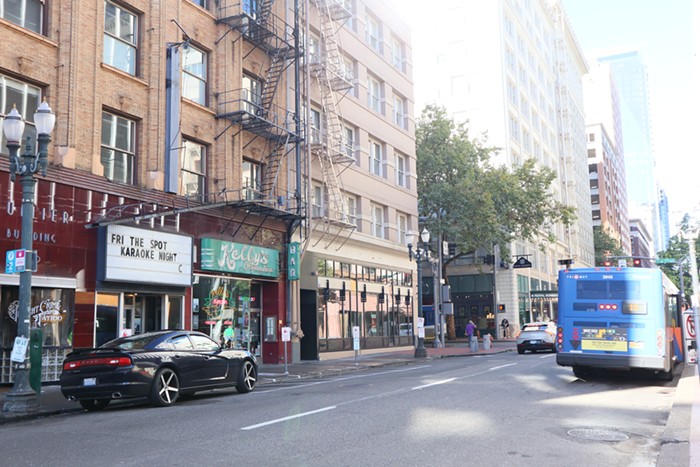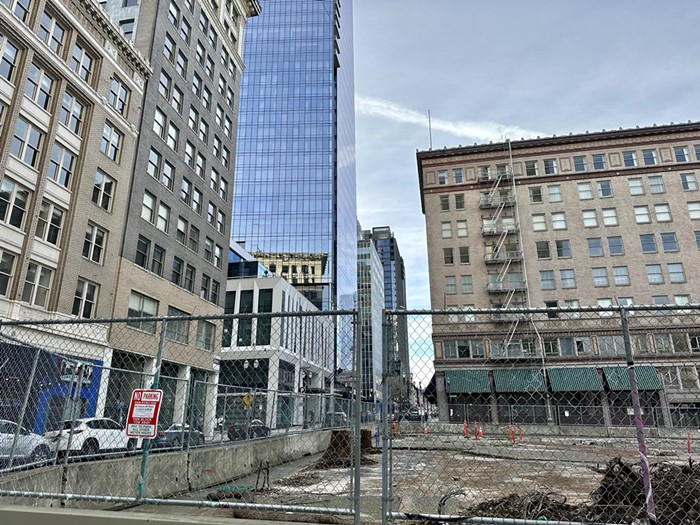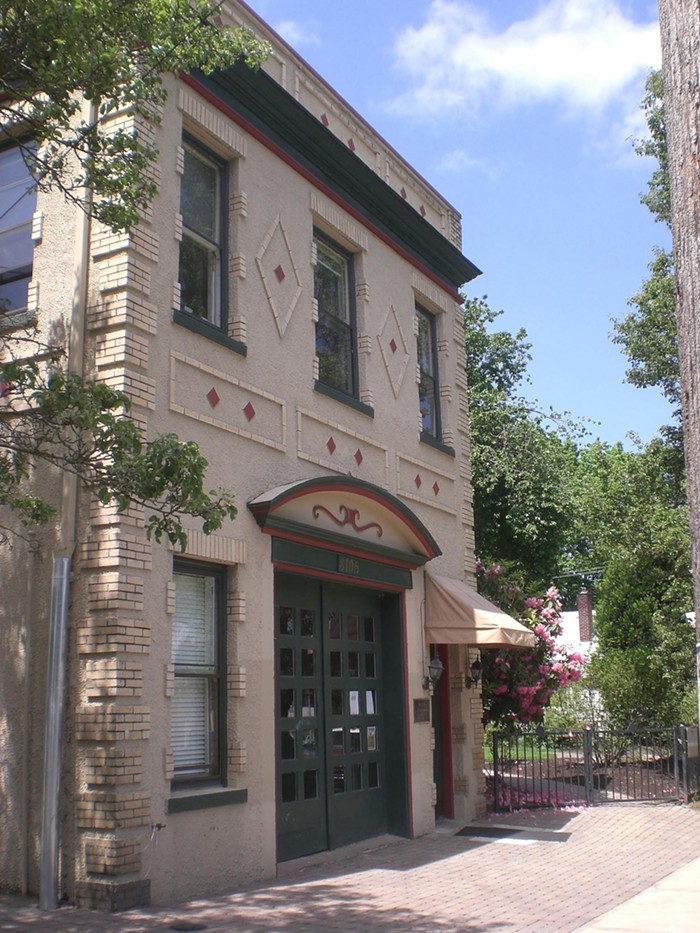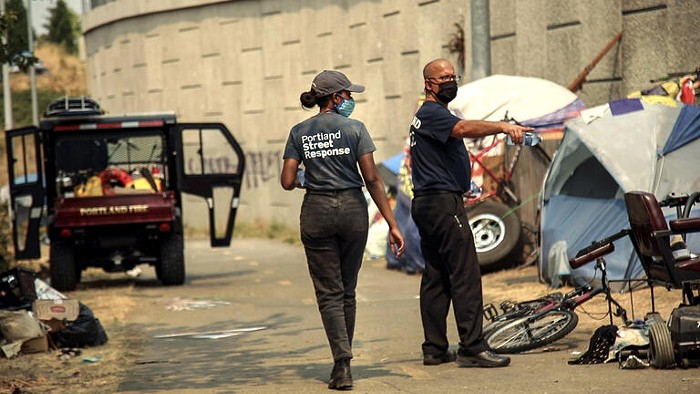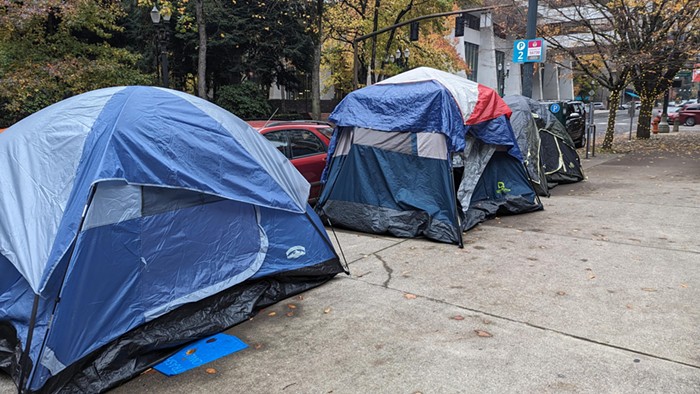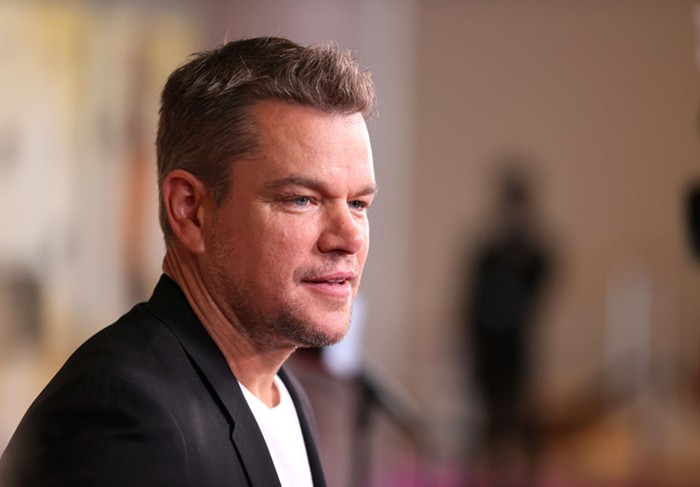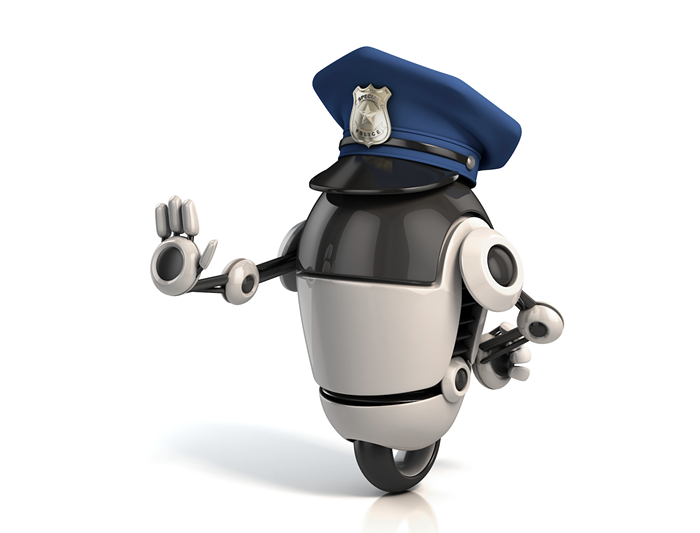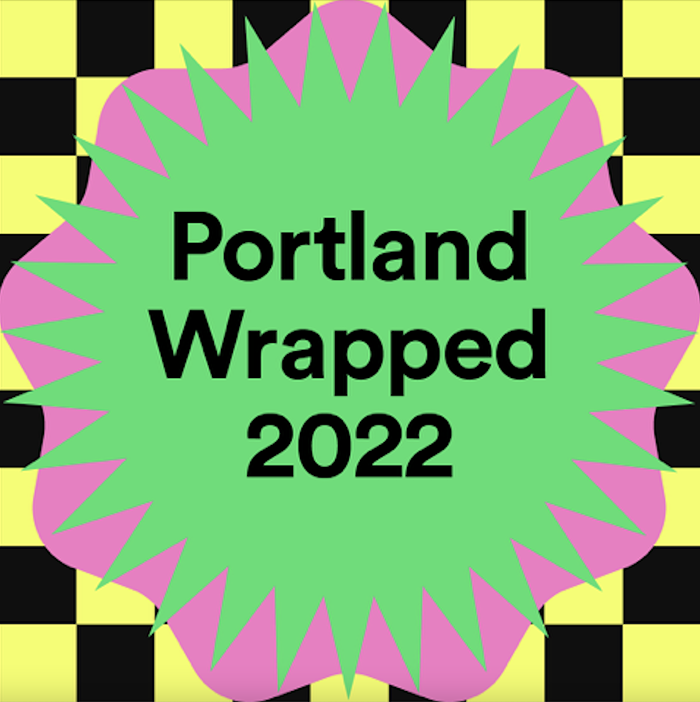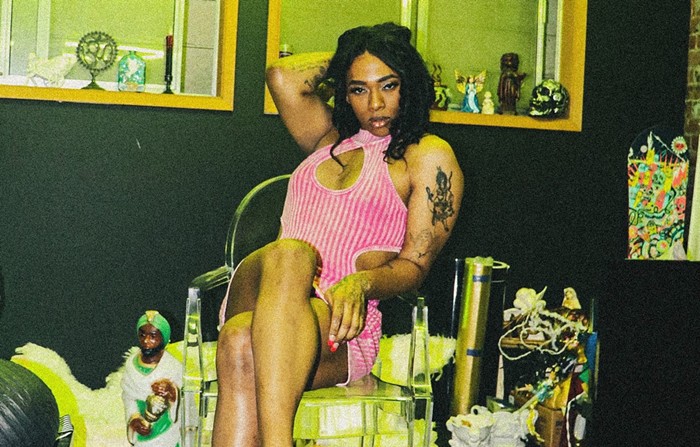
Physicians for Human Rights (PHR), an organization that investigates the health consequences of human rights violations, generally focuses its lens on international atrocities—like the Syrian government intentionally bombing hospitals or the state-sanctioned murder of Rohingya people in Myanmar.
But, after learning about how law enforcement officers in Portland were treating members of the public during the city's racial justice protests, the group conducted it's first-ever investigation of officers using crowd-control weapons to restrict the human rights of US citizens. PHR's investigation into Portland protests, released Thursday morning, details the various ways law enforcement shrugged off medical emergencies, threatened human life, and undermined the work of volunteer street medics during June and July of 2020.
It concludes that both Portland police and federal agents engaged in "a consistent pattern of disproportionate and excessive use of force" against the public—and violated United Nations' guidelines in the process.
On why the organization chose to launch such an investigation, Donna McKay, PHR's executive director, said she didn't see clear information coming from government agencies about what was actually going on in Portland.
"We believe it's our responsibility to bring scientific and medical experiences to bear when information is unknown or highly contested," said Donna McKay, PHR's executive director, in an interview with the Mercury. "This seemed like quite an extraordinary time in history.... and we believe [Portland] is an illustrative snapshot of what's been going on in the United States."
Both McKay and PHR's medical director visited Portland in late July to lead the investigation, which included interviews with street medics, medical professionals, activist leaders, elected officials, and emergency response agencies. The researchers found that law enforcement (both local and federal) had been aiming so-called "less lethal" munitions at protesters' heads, leading to an unusual number of head injuries. They also discovered that the Portland Police Bureau (PPB) had barred ambulances from entering a large perimeter of downtown Portland surrounding the nightly protests, deeming those sections "unsafe."
"The volume and type of weapons deployed [by law enforcement] could be expected to require emergency medical attention," the report reads. "Yet, there were no measures to coordinate between the county EMS, city Fire Department, city police and contracted ambulance service to prevent a gap in services, with the result that civil society had to try to fill this gap."
"This seemed like quite an extraordinary time in history.... and we believe [Portland] is an illustrative snapshot of what's been going on in the United States."
According to PHR, this goes directly against the United Nations' 2020 "Guidance on Less Lethal Weapons in Law Enforcement."
"The UN Guidance states that when the government is deploying crowd-control weapons in a protest setting, the government is obligated to ensure that protesters have timely access to emergency medical services," the report reads.
Several volunteer medics shared stories with PHR about having to carry critically injured people up to five city blocks to reach an ambulance. One street medic, OHSU student Michelle Ozaki, told investigators about an instance where she and five others tried to carry a man with a severe head injury away from the protest to meet an ambulance when he began having a seizure. This might not have happened if an ambulance could have driven directly to where the person had been injured.
Another example describes medics' worries while treating Donovan LaBella, the man shot in the forehead by a munition in mid-July. Izzy Landis, a street medic and former Emergency Medical Technician (EMT), was one of the first medics on the scene. She told PHR that after briefly examining his spine, she walked LaBella several blocks to meet an ambulance.
"I was terrified the whole time that [LaBella] was experiencing more damage [by] having to walk," said Landis in a quote included in the PHR report.
Jesse, a medic with Rosehip Medic Collective and Portland Action Medics, was one of several longtime street medics who contributed to the PHR report. They requested the Mercury identify them by a pseudonym. In an interview with the Mercury, Jesse said that the ambulance restrictions have forced many medics to drive injured protesters to the hospital in their own cars.
"But it's always better to have someone inside an ambulance, because of the supplemental tools inside," Jesse said. "Sometimes it's faster to drive ourselves, but we don't have the life-saving supplies an ambulance can offer."
The report notes that some medics purchased a decommissioned ambulance to bring to demonstrations and use as a mobile exam room and first aid station.
Jesse has also noticed that Portland officers are less cooperative with medics who are with an injured patient. In the past, Jesse said, it would be common for an officer to allow a medic to pass through a police line with an injured person in order to access a vehicle or an open clearing to safely assess injuries. That's no longer the case.
"Police have refused to let patients through their lines," Jesse said. "We’ve even had medics physically pushed off people they are treating by police as they are clearing streets."
The PHR report pointed out that paramedics employed by local government agencies were regularly on the ground during protests, but rarely treated protester injuries. Portland's Deputy Fire Chief Steve Bregman told PHR that while Portland Fire and Rescue (PFR) paramedics do work protests, they are "present to provide medical care for PPB."
Update, 3:30 pm: Bregman refuted this statement in an email to the Mercury. "Our intent with this program has always been clear," Bregman wrote. "We are there to provide quicker and more appropriate care to both injured protesters and officers. It is our duty and we swore an oath to it."
According to PFR spokesperson Rich Chatman, paramedics only began embedding with police during demonstrations in the past several years—following a request from activist group Empower Portland for PFR to "get help to injured protesters quicker."
With Empower Portland and PPB, Chatman said, "we were able to create a program that would theoretically get help to injured demonstrators or officers immediately."
But the program has notable limitations. Chatman explain that PFR medics are required to remain behind PPB lines during a protest, and can only help an injured protester if they're accompanied by PPB officers—or if police have determined that the scene is safe enough for the paramedic to venture into the demonstration on their own.
Chatman said that PHR mischaracterized paramedics' role at Portland demonstrations.
"The idea that we built this program just to treat officers and not demonstrators in the crowd would be completely inconsistent with the foundation and inspiration this program was built from," he said.
Michele Heisler, PHR's medical director said she was struck by the similarities between the Portland protests and the 2013 demonstrations in Istanbul's Gezi Park, where the Turkish government responded to nonviolent protests with tear gas and munitions. Heisler had been in Turkey during these protests to investigate law enforcement's use of force against demonstrators for PHR.
"As a human rights organization, we believe we are probably saving more lives by protesting than not."
"I was shocked by how similar [Portland] was," Heisler said. Like in Portland, officers in Turkey fired projectiles at people’s eyes, heads, necks, and chests, and clouded non-violent demonstrations in tear gas. And, as in Portland, the Turkish government did not allow ambulances to the site of the protests, or provide any medical help for injured protesters.
"Just like here, medical aid was absolutely left to volunteers," she said.
The one difference: In Turkey, Heisler saw more instances of people being blinded by munitions fired at their eyes. "But that’s because people weren’t wearing goggles or protective equipment, like in Portland," Heisler. "That gear really saved protesters and medics [in Portland]."
PPB has often referred to protesters' protective gear as a sign that protesters want to engage in violence. But Heisler said it's clear, by the kinds of injuries protesters have sustained at the hands of Portland police, that goggles, ballistic vests, shields, and helmets are simply common sense ways people can defend themselves against officers' weapons.
Heisler was also stunned by stories they heard of “gratuitous cruelty" at the hands of police—like reports of PPB officers pulling down protesters' medical masks to pepper spray their face.
"It's especially cruel in the midst of a pandemic," she said.
As part of their interview process, Heisler and McKay screened medics for Post-Traumatic Stress Disorder (PTSD). They said the vast majority of medics they spoke with had "moderate to severe PTSD."
The PHR report suggests a number of recommendations to Portland leadership to prevent future human rights violations occurring during protests. They include the city creating a "safe zone" near protests in the future where medical personnel can access people with injuries, making police use-of-force reports available to the public, and requiring officers to wear body cameras.
PHR has joined with local civil rights organizations to advocate for these changes and amplify the human rights violations they documented on Portland's streets. McKay also stressed the importance of focusing this work on the public health crisis these protests are centered on: The disproportionate killing of Black people at the hands of law enforcement.
"As a human rights organization, we believe we are probably saving more lives by protesting than not," McKay said.
She said she was inspired by how in touch white Portland demonstrators were with Portland's racist history, and how that awareness drove them to face state violence on a nightly basis.
"To think that people are risking their lives to try to reckon with their own role in these systems... It left me so hopeful," she said. "If people have the courage to reckon with their roots, [the city] needs to make the space for people to safely protest."

